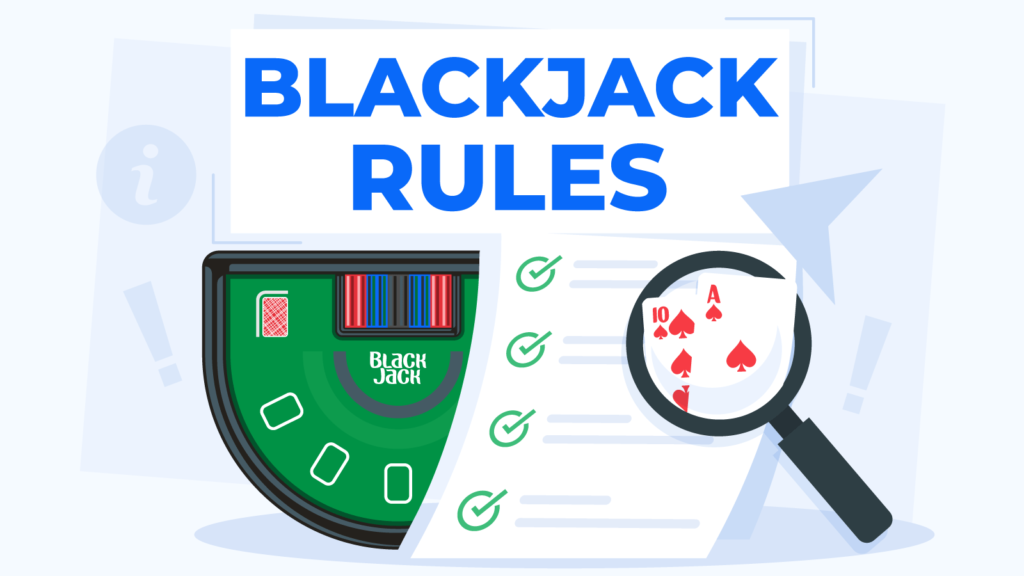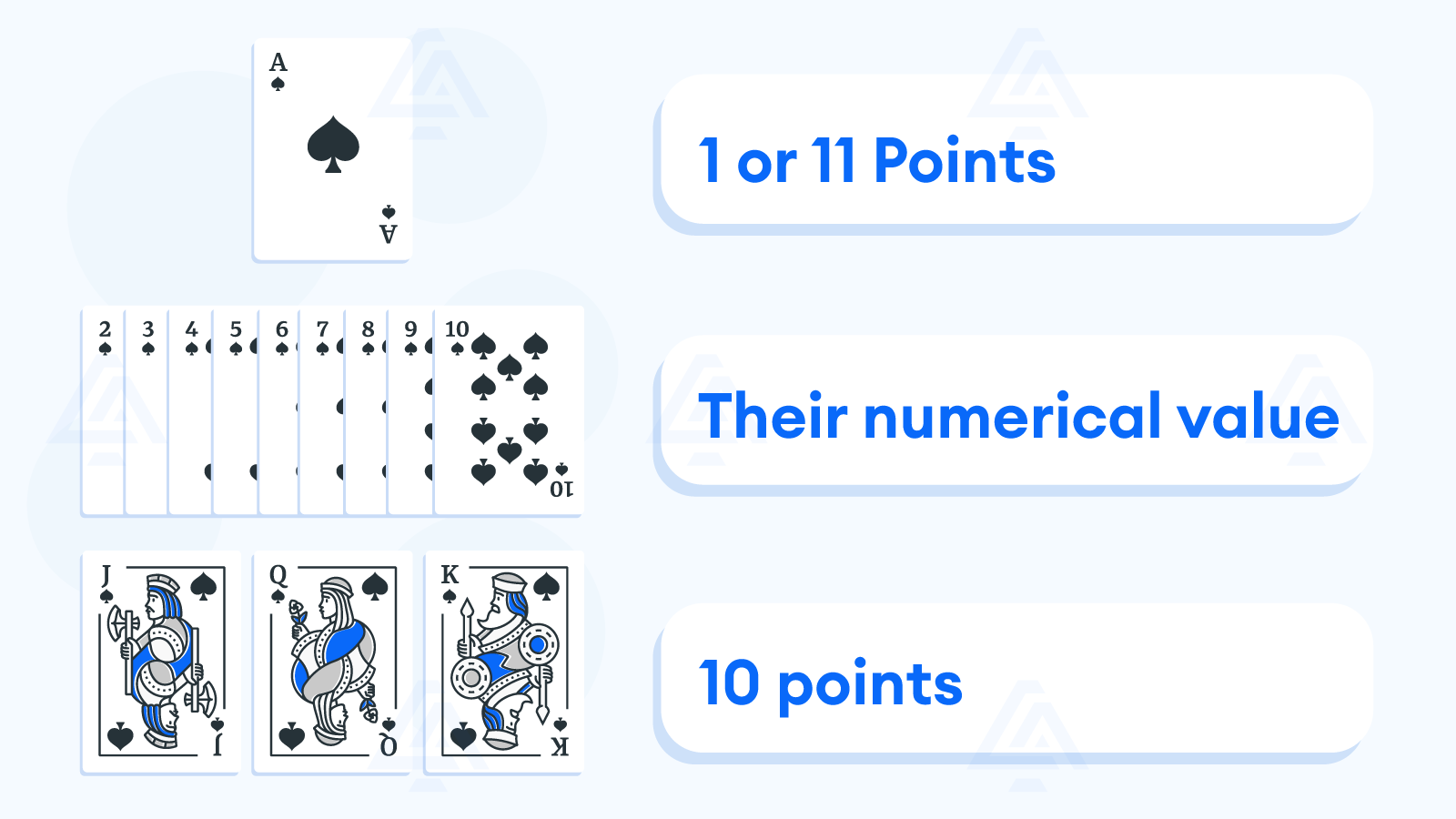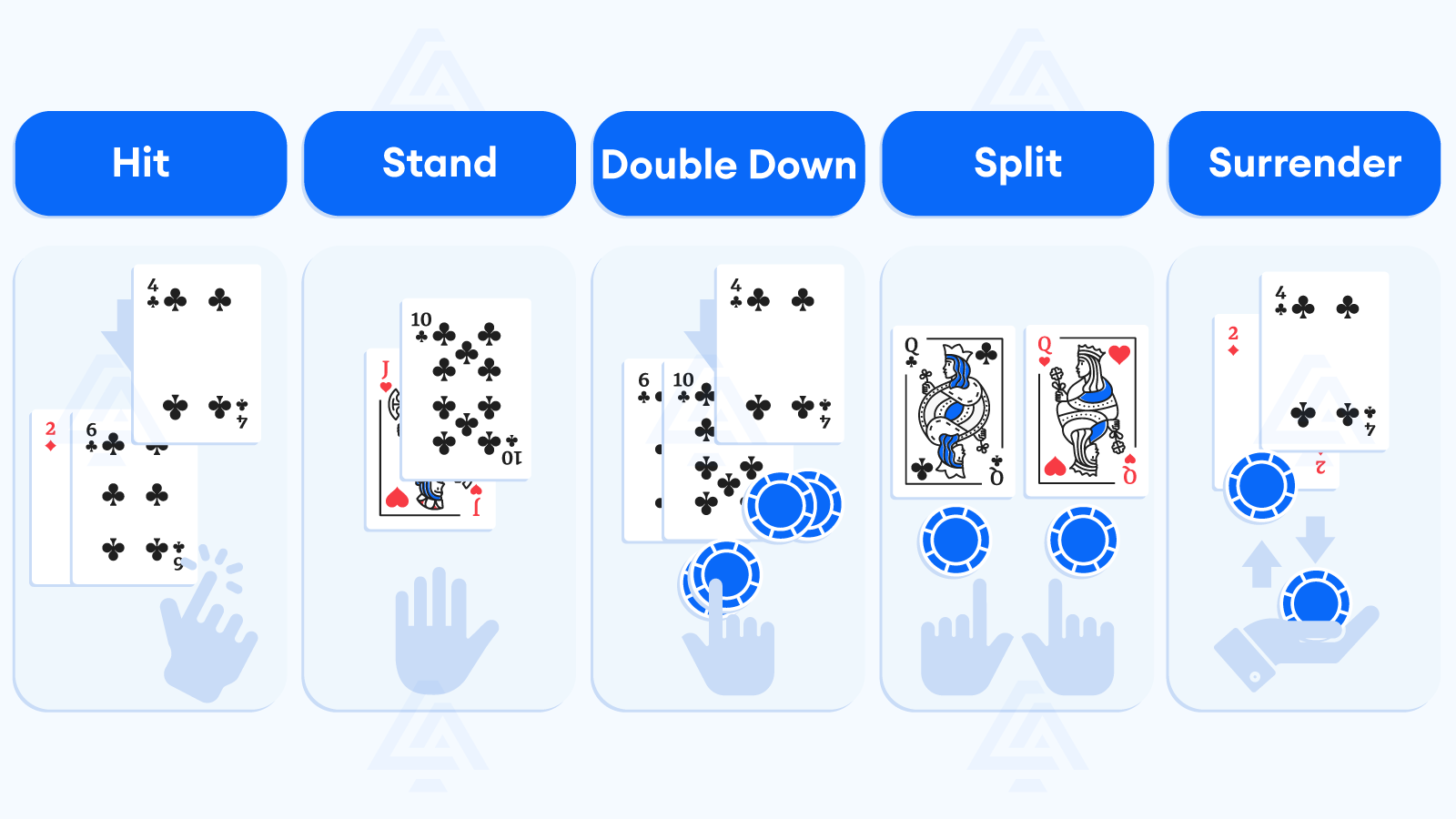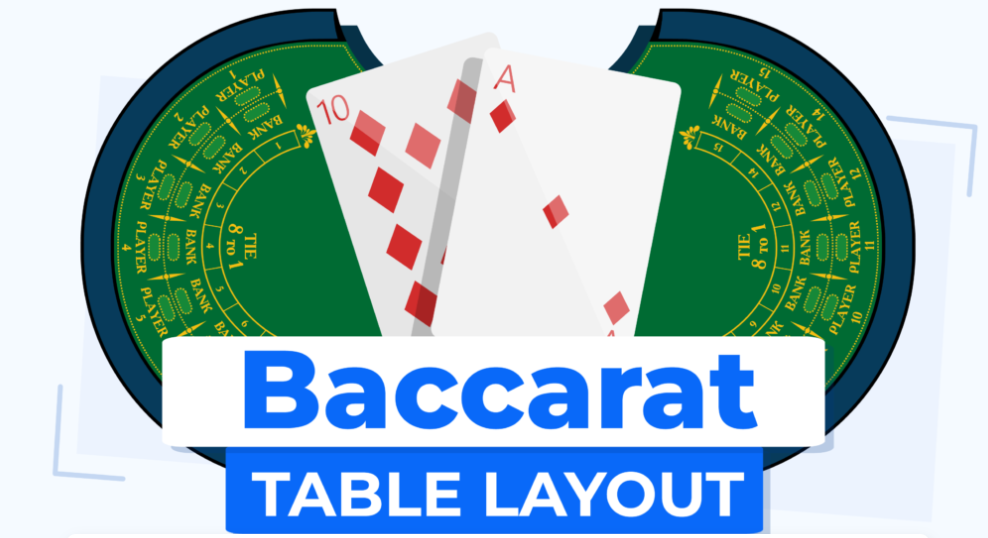
Blackjack Rules Explained: NZ Basics, Variations & Winning Tips
All the information in this page was checked by:
Every piece of information we present is rigorously verified by our team of experts using multiple credible sources, ensuring the highest level of accuracy and reliability.
We have paid partnerships with the online casino operators featured on our site. We may also earn commissions when users click on certain links. However, these partnerships do not affect our reviews, recommendations, or analysis. We remain impartial and committed to delivering unbiased gambling content. For more details, visit our Advertiser Disclosure page.
Most blackjack losses come from misunderstanding the rules, not just from unlucky cards. The main challenge is remembering which moves, like doubling down or splitting, are allowed, and how dealer rules affect your odds. By the end of this unique guide, we think you will have the knowledge you need to improve your strategy and make more intelligent moves when you play blackjack.
- Cracking the Code: What is Blackjack?
- Mastering Blackjack rules: your roadmap to conquer the 21 thrills!
- Inside the Blackjack action: a sneak peek into the world of 21
- Blackjack Dos and Don’ts
- One Casino Blackjack strategy
- References
Cracking the Code: What is Blackjack?
Blackjack is a banking game played in casinos. It is the American version of a wider group of banking games known collectively as Twenty-One. The most popular Online Blackjack casinos will provide these and much more. Any NZ casino Blackjack player should, of course, browse through available options.
Casino Blackjack decks of cards basics
Casino Blackjack is played with several 52 decks of cards shuffled together. An extra blank plastic card is placed towards the end of the current pack. Its only role is to inform the dealer when the cards need reshuffling. If you are playing a version employing a game with more than four decks, these will be placed within a shoe. This container’s name permits the dealer to remove one card at a time, face down. Fun fact: Some tables will have automatic card shuffling machines for efficiency and fairness.
The Casino Blackjack table layout
- Where to sit at the Table?
The seat to have the first cards dealt in casino Blackjack is on the far right and is often called First base. The player to last receive its cards sits on the table’s left side; a seat referred to as the third base. Most other seats do not have an assigned name, except for the one right in the middle, called the Shortstop.
- Does your seating matter?
The player placement does not affect the game’s house edge. Nonetheless, you may indeed receive your cards sooner or later than other participants, and this may affect your decisions. Important: The House Edge describes the mathematical advantage casinos have over players. A third base player will receive its cards right before the dealer does, so its decisions must be quicker paced, while the first base player will have all the time to decide on subsequent actions. However, your seating will not change your winning chances in the long term and should not be an essential part of your Blackjack betting strategy.
Is it safe to play Blackjack on gambling sites in New Zealand?
Online gambling services require accreditation from licensing authorities recognised in New Zealand, supposing both initial and subsequent fairness verifications. The process is complex, but there is one conclusion: online Blackjack is not rigged. Although the world of New Zealand iGaming differs in some ways from brick-and-mortar casino gambling, fairness is not such an aspect. After analysing the wide market of the best online New Zealand casinos, we can safely say that the sites we provide are well accredited and will treat their customers fairly. Online games use a Random Number Generator to ensure fairness, so you can trust that each card dealt is random and unbiased. Recommendation: If you count yourself among the Kiwi online gamblers, you should consider the top NZ live casinos. These veridically emulate the space of a NZ land-based casino, making them ideal to familiarise yourself with the placement and rules. Of course, you must find a worthwhile platform, but we will ensure you find the best deal available in New Zealand.
Why play online Blackjack?
- Join the Growing Trend – The New Zealand iGaming industry had its past drawbacks, with restrictive bills passed by the New Zealand government. Nonetheless, it also saw steady growth in recent years, and the trend will only continue.
- It Will Only Improve – Not only quantity, but quality also will increase.
- Same But Better – Online Blackjack does not differ greatly from land-based casino games. The rules are effectively the same. Once you have mastered one, you will have mastered the other, too.
- At Your Fingertips – Online Blackjack has some perks its physical counterpart cannot provide. There are five casinos on New Zealand soil, so the average Kiwi gambler may find them to be out of reach. Online casinos prove more convenient.
- Get to Know the Game Better – Simplifying the game’s structure down to the very Blackjack basics can only help with the New Zealand players’ technical understanding.
- Bettors Can Be Choosers—The game variety in online NZ casinos may surpass New Zealand land-based enterprises’ offerings. If you’re looking for the best odds, particularly at new casinos, read our Winning Odds at New Casinos guide to find the top options.
- Certified Entertainment – Yes, online gambling sites are a legitimate choice for any Kiwi casino Blackjack enthusiast.
Mastering Blackjack rules: your roadmap to conquer the 21 thrills!
Your main goal is beating the dealer’s hand without your sum value exceeding 21. However, did you know that some players use systems like the Martingale Blackjack Strategy to manage their bets, doubling their wager after every loss? 
-
The set values for Casino Blackjack cards
| Card type | Card value |
|---|---|
| Numbered cards (from 2 to 10) | The value shown on them |
| Face cards, except for aces | 10 |
| Aces | 1 or 11 |
Aces will take the value that gives you a better hand. All players receive two cards with their face down. The dealer receives the same, although one of his cards can be face up. Fun Fact: A dealer’s visible card is often called the upcard. It is one of the main aspects to consider in your Blackjack strategy as far as bets go. The one with face down is called the hole card.
-
Player bets in Casino Blackjack
These are the two main bet types that decide how Blackjack works: 
- Hit – you receive another card.
- Stand – you hold your total until the round’s end.
More Blackjack bets:
- Doubling-down – if your two cards have a good sum, requiring one good hit, you can request another wager. As the name suggests, your total bet now is double your original wager.
- Splitting – if you hold two matching value cards, you split them into two separate hands. You add another equal bet per your extra hand and start playing with both values. You may be able to re-split your cards if you again find yourself in the same situation.
- Splitting aces is identical to splitting, although you can re-split and receive one more dealt card per hand.
- Surrendering – surrender in Blackjack implies dropping your hand and giving up only half your bet instead of potentially losing it all.
- Placing an insurance bet – if the dealer’s up-card is an ace, you can place a bet that pays 2:1 if the other is a ten-value card. To understand more about when to take insurance and when to skip it, check out our complete Blackjack Insurance guide.
Tips:
- Casino Blackjack games have two types of surrendering: early or before being dealt an additional card or late surrender.
- The payout tells you how much you receive for a certain bet. As its format may seem confusing, we provide some examples: Blackjack 3 to 2 payout means that you receive $3 for every $2 wagered, 2 to 1 means that you get double your bet, 5 to 1 for five times your wager, and so on.
The possible results of Casino Blackjack
- Busting – you exceed the sum value of 21. This means that you lose the hand.
- Pushing – your and the dealer’s hands have equal values. It’s essentially a tie, and what happens to your bet will depend on the casino Blackjack played.
- Dealer Wins – your hand has a lower value hand than the dealer’s.
- You Win – your hand is closer to 21 than the dealer’s, without exceeding the value.
Tips:
- Having a 21-value hand means that you’ve hit Blackjack or 21. Your hand generally trumps all others.
- As for your two first dealt cards, getting an Ace and a ten-value card means that you got a Natural 21. This wins against a dealer’s eventual non-Natural 21.
Soft and hard hands
Soft hands in casino Blackjack contain an Ace that can take both possible values without resulting in a bust. Understanding Blackjack Odds can help you decide whether to hit, stand, or double down based on the dealer’s upcard. Here’s an example: You get a seven and an ace. Your hand can take both the values of 8 and 17 without exceeding 21. This means you have a soft 17 hand.
The two types of hard hands in Casino Blackjack
- You only get numbered or face cards. These have set values, so your hand total cannot vary.
- You hold an Ace, but its potential 11 value leads to a bust.
We will give two examples:
- You receive a numbered card, say a 9, and a face card.
This has a set value of 19. It’s a hard hand.
- You hold a 9-valued card, a 2-valued card and an Ace.
If the Ace takes the 11-value, your total is 22, and you bust. Thus, the Ace can only take the value of 1. The soft-hard hand dichotomy is important, as you wish to have flexibility in your play.
One scenario
You have an Ace and a 6. The dealer has a 7 as its upcard. Theoretical casino Blackjack basics dictate that you should hit in this instance, although it is a borderline case. The good news is that you may safely hit with this soft hand. No extra card will lead to a bust. Cards up to 5 are ideal, although getting anything over that is still playable. Imagine now that you had a 10 and a 6. Theoretically, you should still hit. Nevertheless, it’s a lot riskier, as anything over 5 leads to a loss.
Blackjack types
- Pontoon
There are two main differences. The only hand better than a natural 21 is comprised of five cards totalling 21. The dealer also wins in a push.
- Spanish 21
It uses four to eight Spanish decks. Consequently, you receive bigger payouts for five, six, seven, and eight-card Blackjacks. The player wins in a push.
- Perfect Pairs
You receive payouts for pairs, matching colour cards, pairs with matching colours, and perfect pairs, or matching consecutive colour cards.
- Match Play 21
It is similar to Spanish 21, but you get a 3:1 payout for three-seven Blackjacks or a 6-7-8 hand. A Match Play 21 pays out 40:1.
- Blackjack Switch
You play with two hands and can even switch between them. The downside is that a dealer’s 22-hand against your non-natural 21 is a push.
- Face-Up 21
The dealer plays with both cards up. You lose all ties, except for when you have a natural 21.
- European Blackjack
The dealer stands on a soft 17. You can double only on hard 9 or 11-hands. You lose all doubles or splits when the dealer hits 21.
- Super 21
You win with a six-card hand amounting to 20 or less. A five-card hand totalling 21 or less pays out 2:1. These rules don’t apply to doubles.
- Progressive Blackjack
You have a side bet acting like a progressive jackpot.
- Multi-Hand Blackjack
You can play from three up to 25 hands at once. For those interested in double-deck blackjack, a unique approach is needed.
- Bonus Blackjack
You have several side bet options acting like bonus payouts. You can, for example, bet on you or the dealer getting a natural 21. Fun Fact: A Spanish deck of cards has all 10-rank cards removed. You know the Blackjack basics, terminology, and rules and the possible versions you may encounter in Kiwi enterprises.
Inside the Blackjack action: a sneak peek into the world of 21
- Choose a casino Blackjack table. Check the relevant Blackjack rules and the game version you will be playing.
- Place your initial wager in the designated area. Both in land-based casinos and in online Blackjack, you will do so via chips with monetary value.
- The dealer will draw cards from the shoe and impart them one at a time to each casino Blackjack player with a placed bet. The cards will be placed either face up or face down. This should not affect your gameplay.
- Following the first pass, the dealer will also draw the hole card. After the second pass, it will draw the upcard.
- Once every player has two cards, they will be asked to make decisions, beginning from the first base seat to the third base. From here on, you will choose from one of the allowed actions.
- Once all Blackjack players decide what they will do, the dealer will expose the hole card. Based on the actions the dealer is allowed to take, your game will arrive at one possible outcome.
- In case of winning, the dealer will return your bet and payout. If you lost, the dealer would take your wagered chips.
- Once the dealer discards dealt cards, the casino Blackjack table can now commence with another round.
These are the eight steps through which any New Zealand casino Blackjack game will proceed.
How the dealer plays the hands
- A dealer will always hit on any 16-total hand or below.
- Dealers will always stand on 18 hands or anything higher.
While players can freely decide on their actions, whether they’re right or wrong, this is not the case for Blackjack dealers. A 17-hand, however, is where things can differ. Some casinos may require dealers to hit a soft 17, while it will stand on the same hand in others. Tips: All New Zealand casino Blackjack tables will state whether the dealer stands on a soft 17 or not.
Should you emulate the dealer’s actions?
No, as casino Blackjack is asymmetric by design.
Here are the outliers:
- In most cases, you see only one of the dealer’s cards. Of course, your cards do not affect the dealer’s choices.
- The dealer acts last. You won’t see how its hand will play out, so you may lose or bust, despite the dealer possibly being in the same situation.
However, the dealer’s set decisions can be favourable to you. Say you have a hard 16, and you decide to stand. Additionally, the dealer has a hard 16. Judging by the rules, it must hit, although a push may mean that all bets are returned. If the dealt card exceeds 5, the dealer busts, and you win. So, you shouldn’t copy the dealer. Nonetheless, there are some guidelines you can follow:
Blackjack Dos and Don’ts
These are general tried and tested rules you can consider while playing casino Blackjack in New Zealand. They are good as parts of a wider strategy but should not supersede your dynamic decision making. To increase your odds in live games, check out our guide on How to Improve Live Games Odds and learn key strategies.
Dos
- Control your spending and set a maximum loss limit.
- Stop for a while if you’re on a losing streak.
Be aware: Expecting the tables to turn and your luck to return when on a losing streak is a classic gambler’s fallacy example. Each casino Blackjack round is randomised. In such cases, you should take a break and reassess your game strategy.
When to Surrender
- Only surrender a 16-hand against a dealer’s 9 up to Ace upcard.
- Only surrender a 15-hand against a dealer’s 10 upcard.
For more insights on making safe decisions in live games, take a look at our guide on Which Are the Safest Live Casino Bets.
When to Split
The following table will tell you what Blackjack hands to split:
| Your Pair | When to split | What to do otherwise |
|---|---|---|
| Aces | Always. | x |
| A pair of 9’s | If a dealer has 2 through 9 as the upcard | 7 is the exception. Then, you should stand |
| A pair of 8’s | Always | x |
| A pair of 6’s or 7’s | If the dealer’s upcard is lower or equal to your cards’ value | Hit |
| A pair of 5’s | When the dealer has anything from 2 up to 9 | Hit |
| A pair of 4’s | Only if the dealer’s upcard is 5 or 6 | Hit |
| A pair of 2’s or 3’s | When a dealer has 2 through 7 | Hit |
Soft hands
Remember that a soft hand is an Ace and any number card from 2 up to 9. This is what you should do for all soft totals:
| You hold an Ace and | When to double | Otherwise |
|---|---|---|
| 9 | Never | Always stand |
| 8 | Against a dealer’s 6 | Stand |
| 7 | Against 2 through 6 | Hit against a dealer’s 9 through Ace, otherwise stand |
| 6 | Against 3 through 6 | Hit |
| 4 or 5 | Against 4 through 6 | Hit |
| 2 or 3 | Against 5 through 6 | Hit |
Hard hands
Dos
- 17 through 21: Stand.
- 13 through 16: Stand against a dealer’s 2 through 6 upcard. Otherwise hit.
- 12: Stand against a dealer’s 4 through 6 upcard. Otherwise hit.
- 11: Double.
- 10: Double against 2 through 9, otherwise hit.
- 9: Double against 3 through 6, otherwise hit.
- 8: Hit.
Don’ts
- Try mimicking the dealer—imitating the dealer, including never splitting or doubling down, results in a 5.5% house edge.
- Always assume the dealer has a 10-valued hole card. Assuming the 10-value card in the hole leads to a disastrous 10% casino house edge.
- Use a “never bust” attitude, as it will raise the casino’s house edge to about 4%.
- Base your strategy on insurance bets. This is a soft “don’t”, as certain approaches can utilise insurance bets. A casino will have almost a 6% house edge when you’re using insurance bets.
- Ignore the dealer’s upcard. A dealer’s upcard is good if it’s 7 through an Ace. Upcards from 2 to 6 are considered bad.
- Go blazing in. Rather start small, warm up to the game, and assess whether the dealer is “hot” or “cold.”
- Base your decisions on the other gamblers’ hands.
- Split tens. You might as well stand.
Casino Blackjack charts
Charts are a great resource that will augment any NZ player’s casino Blackjack strategy.
What are casino Blackjack charts?
They are a visual reminder of the best decisions in all possible scenarios. All New Zealand Blackjack enthusiasts should study them before playing a game. We will give an example and break down how to read the charts:
Basic Blackjack strategy chart that explained:
- The rules, number of decks, and game version it addresses.
- The estimated house edge when applying the rules.
- A table relating all your possible hands, the dealer’s upcard, and what action you should take.
- A description of the terms used, including the symbols for hitting, standing, splitting, and doubling, if allowed.
- Managing your budget effectively is key to long-term success. For live games, check out our guide on How to Manage Live Casino Budget.
How to integrate charts into the Blackjack strategy
We recommend you memorise the charts that apply for your casino Blackjack version of choice, as it will augment your play. However, your approach will go beyond that. Once you accrue enough experience, you will need to learn when to deviate from these Blackjack basics. Important: There are two types of deviations: Play deviations and Bet deviations. Your emerging playstyle and Blackjack strategy will depend on learning about these and employing them correctly. All these guidelines apply to both casino and online Blackjack. However, you should build a cohesive strategy that goes beyond Blackjack basics.
One Casino Blackjack strategy
By now, you understand all the Blackjack basics, so all you must do is utilise them correctly. Consider this to be the New Zealander’s guide to an effective starting strategy.
- Learn a Blackjack strategy chart by heart.
- Choose a table with the same game specifications as your chart’s.
- We recommend that you choose one with fewer betting and payout schemes. Perfect Pairs, Side Bet, or Spanish 21 casino games are entertaining. Still, the standard casino Blackjack version will help your decision making.
- Splits, doubles, and surrendering complicate your process, but not to a great extent.
- Manage your betting while you get a feel for the game. Additionally, keep your loss and winnings self-limits in mind.
- Remember that the game is still randomised. Do not expect always to win. However, it may be time to reassess your playstyle when you’re on a losing streak.
- Leave the table once you have reached your limits. Once you accumulate some experience, start studying deviation scenarios and charts.
- Develop your betting system by applying a few consecrated techniques. The double-deck Blackjack strategy can be an easy one to start with.
- And this is it. You know all the Blackjack basics. You also have a way of developing your Blackjack strategy. Just like that, you have started your casino Blackjack career.








